We benchmarked 16 web scrapers from 5 leading web data infrastructure providers to scrape top e-commerce websites like Walmart and Amazon in 7 different countries. Based on our learnings, see the leading e-commerce scrapers, detailing their functionalities and pricing models:
| Provider | Best for | |
|---|---|---|
1. | Web scraping APIs with detailed results at cost-effective prices | |
2. | Fast web scraping APIs for real-time use cases | |
3. | E-commerce scraper with built-in AI-based parser | |
4. | Market-leading prices | |
5. | Web scraping APIs with a community-driven approach | |
6. | General-purpose scraping with e-commerce focus | |
The best e-commerce scrapers of 2025
We have only included vendors that provide specialized e-commerce web scrapers and have excluded those offering general-purpose web scrapers from our list:
| Vendors | Free trial | Starting price/mo | PAYG |
|---|---|---|---|
| Bright Data | 7 days | $499 for 200k | ✅ |
| Decodo | 14-day money-back | $29 for 23k requests | ❌ |
| Oxylabs | 7 days | $49 for 36k requests | ❌ |
| Zyte | $5 free credit | $5 for 10,000 | ✅ |
| Apify | 14 days | $40 | ❌ |
| Nimbleway | 7 days | $150 for 150 credits | ✅ |
E-commerce scraping API benchmark results
Response times of the top e-commerce scrapers
See the average number of fields returned by scrapers and their median response times in e-commerce websites:
The number of fields returned and the response time typically have an inverse relationship. For definitions, see the methodology section.
Cost comparison of the top e-commerce scrapers
Notes:
- These are the monthly rates. We omitted annual purchase discounts.
- The pricing table includes only data from services with a success rate of 90% or higher.
- Providers are paid based on successful results.

Bright Data
Bright Data offers the most extensive collection of pre-built scraping templates, covering 64 different domains. Each domain includes multiple scrapers tailored to specific data points. For example, the Amazon domain features 13 distinct scrapers.
Bright Data provides two types of scrapers for any selected domain and data point: an API-based scraper and a no-code Control Panel scraper. In addition to ecommerce data scraping tools, the provider also offers pre-made e-commerce datasets.
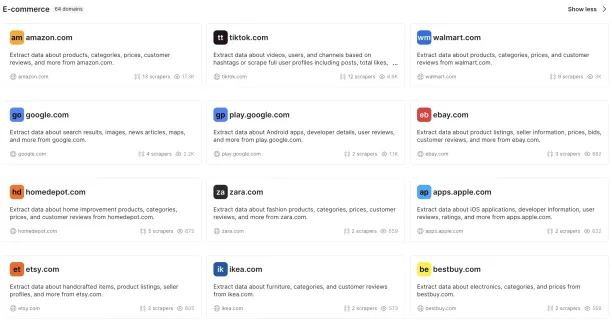

Decodo
Decodo offers two types of scraping APIs: Core and Advanced. The Core Scraping API is a general-purpose solution that can be used across any domain. The Advanced Scraping API provides domain-specific templates tailored for major e-commerce platforms, including Amazon, Target, and Walmart.
For instance, the advanced API playground with Amazon-specific targeting supports multiple domains such as .co.uk, .com.au, .com.mx, .co.jp, for regional product data scraping. However, the current playground is limited to 10 requests per day.
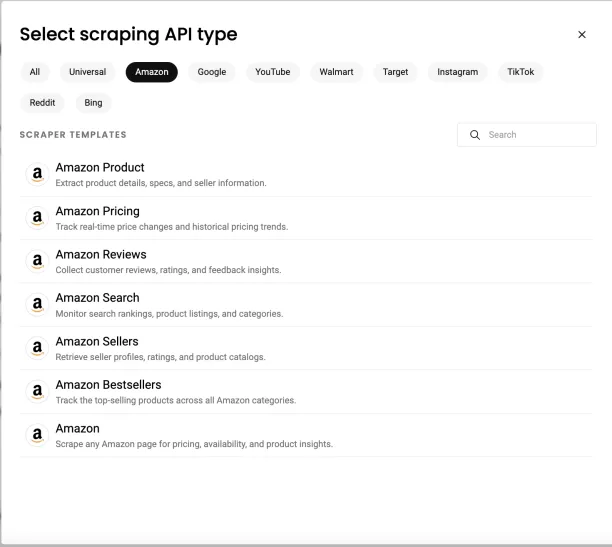

Oxylabs
Oxylabs’ Scraper APIs Playground includes a wide range of e-commerce sites, both global and regional:
- Major global marketplaces: Amazon, eBay, AliExpress, Alibaba, Etsy, Walmart, Google Shopping.
- Regional retailers: Flipkart (India), Cdiscount (France), Falabella (Latin America), Magazine Luiza (Brazil), Lazada (Southeast Asia), and more.
- Niche stores: Instacart, Avnet, Menards, Petco.
OxyCopilot is a scraper API feature that enables users to create a custom parser tailored to their specific parsing requirements without requiring manual coding. Instead of manually cleaning or organizing the data, users can leverage prompt engineering to define precisely which data they need.
Here’s an example where we selected only four data fields from a specific eCommerce URL.
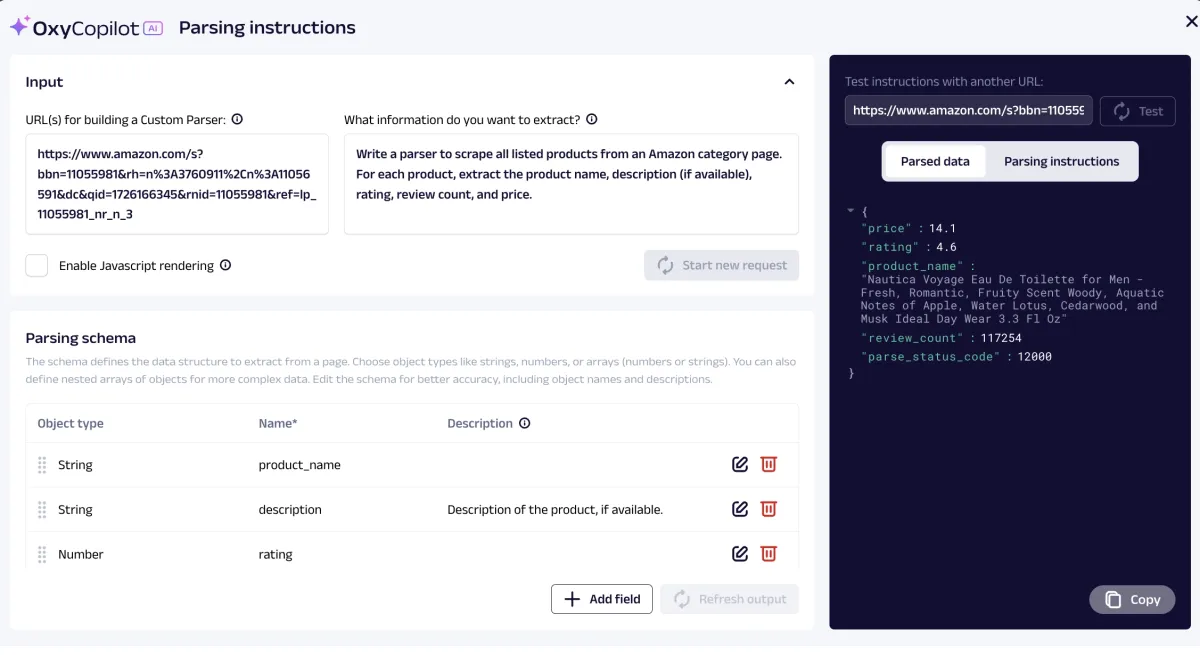

Zyte
Zyte offers a versatile web scraping API, featuring specialized capabilities for e-commerce scraping. The provider also offers a no-code web scraping tool that lets users without coding knowledge build scrapers. Zyte provides ready-made datasets for product data.

Nimble
Nimbleway offers a general-purpose web scraping API with specialized capabilities for specific verticals, including e-commerce. E-commerce scraper API is optimized for the domains Amazon and Walmart. The tool enables users to scrape data at the country, city, and ZIP code levels.
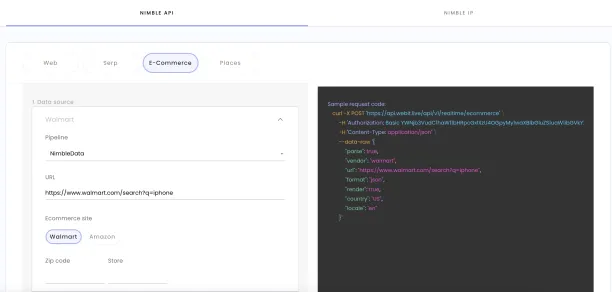

Apify
Apify offers an Amazon product scraper that allows users to extract information from the website by specifying a URL and a country. This API retrieves various data points, including reviews, prices, descriptions, and Amazon Standard Identification Numbers (ASINs).
The scraper is capable of delivering upwards of 100,000 results on average, although there isn’t a standard figure applicable to all scenarios. The maximum quantity of outcomes can fluctuate based on the intricacy of the provided information, geographical considerations, and additional variables.
Methodology
A total of 1,700 URLs from 9 leading e-commerce web domains are tested. List of domains:
- amazon.es
- amazon.com
- amazon.ca
- amazon.co.uk
- amazon.de
- amazon.fr
- amazon.it
- walmart.com
- target.com
For each domain, we included 100 URLs from each type of page:
- Search (example from Amazon.com). However, the target.com search page was left out since most providers don’t provide a web scraper API for those pages.
- Product detail page (example from Amazon.de)
For more, see our methodology for benchmarking web scraper APIs.
FAQ
What is an e-commerce scraper?
An e-commerce scraper is a no-code tool or API designed to automatically extract structured data, such as product names, prices, availability, and reviews, from e-commerce sites.
What kind of data can I scrape from e-commerce websites?
You can typically extract:
Shipping options and delivery times
Product names and descriptions
Pricing data
Availability (in-stock/out-of-stock)
Customer reviews and ratings







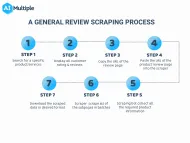
Comments
Your email address will not be published. All fields are required.